Joris Laarman Lab explores 3D-printed metal and open-source chair designs in New York exhibition
An exhibition by Dutch designer Joris Laarman includes a blueprint for a chair that can be altered and produced by anyone with a 3D printer, as well as some of the first 3D-printed metal furniture (+ slideshow).
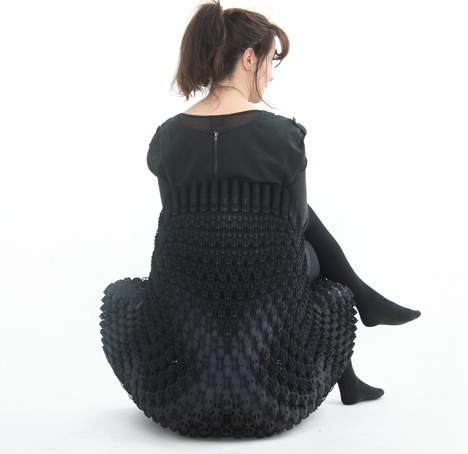
"Digital technology is starting to define an evolution in the way we design, manufacture, distribute, protect, and even recycle physical products," said Laarman.
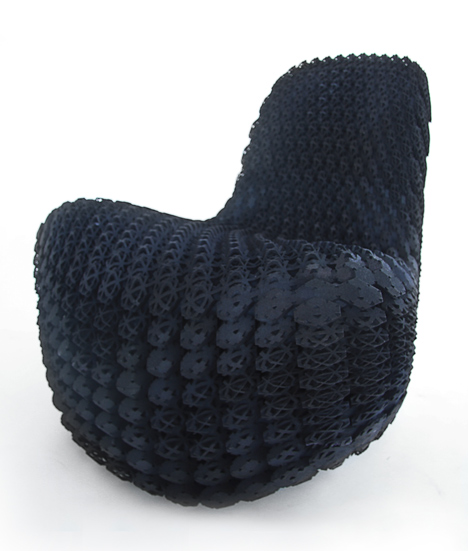
"In the early 20th century, modernist pioneers valued and changed the aesthetics and our ideas about design when they were inspired by emerging industrial, manufacturing methods. Now, the realm of digital design tools and digital fabrication is shifting our notion of design and pushing artists to explore the endless new possibilities of the digital revolution."
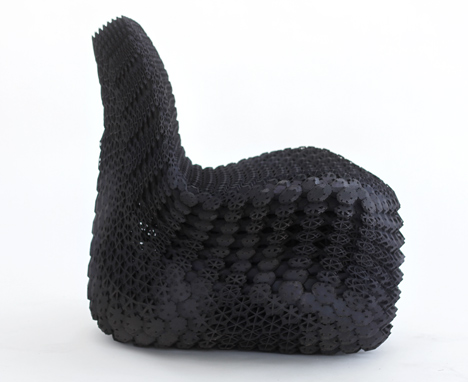
Exploring the impact of the digitisation on the design world, Lab: Bits and Crafts at the Friedman Benda gallery in New York has four key themes: Spirographic; Maker; Vortex; and Microstructures.
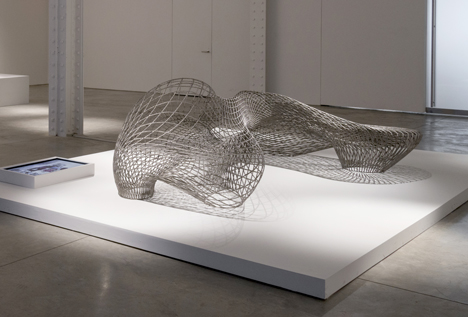
The Spirographic series is manufactured using the MX3D printer, a robotic 3D printer created by Joris Laarman Lab that is one of the first to print in metal. Small amounts of molten stainless steel are printed mid-air, enabling Laarman to draw intersecting lines in space, resulting in a collection that includes the three and a half metre long, two and a half metre wide Dragon bench: an asymmetrical, organic form outlined with the steel mesh.
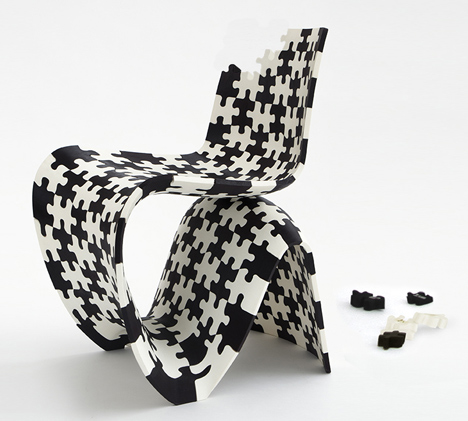
The MX3D was designed by Joris Laarman and created in collaboration with Tim Geurtjens, Filippo Gilardi, Acotech Automation B.V. Hal, and Autodesk.
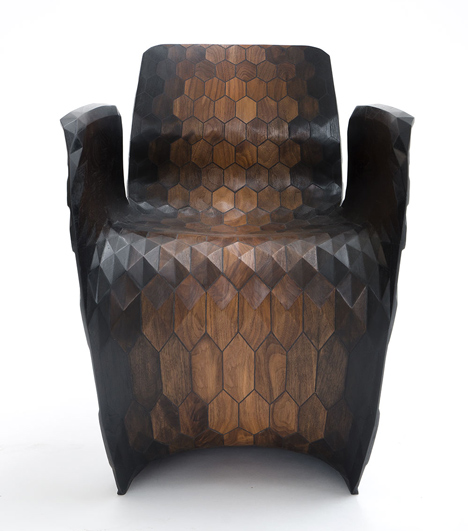
The pieces created under the Maker theme are a response to what Laarman sees as "the bounding box and poor material choice of many today's digital fabrication methods."
Maker pieces are built from small parts of multiple materials (resin, solid woods, plastics, metals) in multiple shapes (triangular, hexagonal, figurative, pixelated) that are engineered to fit together like a three-dimensional puzzle.
The materials and shapes are chosen for their strength and aesthetic qualities. Using a large number of small elements allows complex shapes to be efficiently created from high quality materials.
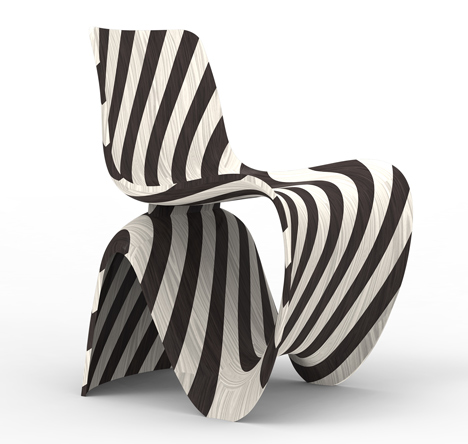
Each chair is one continuous curve referencing the iconic Pantone chair, while the aesthetic varies from jigsaw patterns and zebra stripes to a snakeskin-like patina of hexagons or an open mesh depending on the elements that have been pieced together to form the whole.
"I believe in the symbiosis of handcraft and technology," said Laarman. "The Maker series fits right into that dream." The Amsterdam-based Joris Laarman Lab plans to publish digital blueprints on the internet, open for people to change, modify and create themselves, which it says will offer a new system for the production and distribution of design.
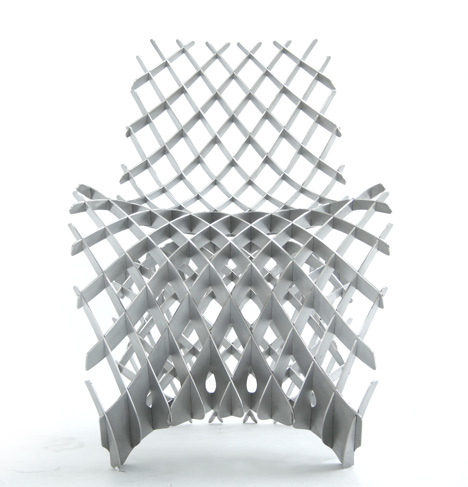
For the Vortex theme, Laarman worked with Mark J. Stock, using "generative design" to create pieces such as the Vortex Bookshelf and Console. Generative design involves inputting a set of rules or algorithms into a computer programme to create new and often unexpected outputs, resulting in a unique design every time.
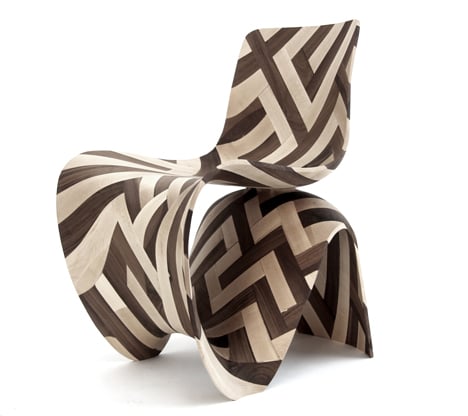
"Ever since the beginning of modern design there has been a discourse about the use of ornament versus functionality; crafts versus industry. Looking at a globalized world that becomes increasingly uniform, ornament and mass customisation are becoming more and more important aspects of design," said Laarman
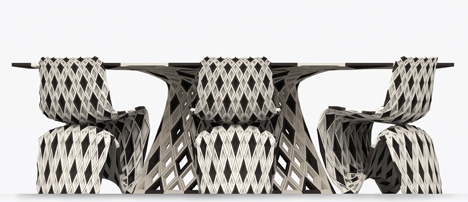
"The Vortex pieces were inspired by research by Mark J. Stock of the University of Michigan. By using his methods in our designs, we allow users to decide the amount of ornament they desire in a piece."
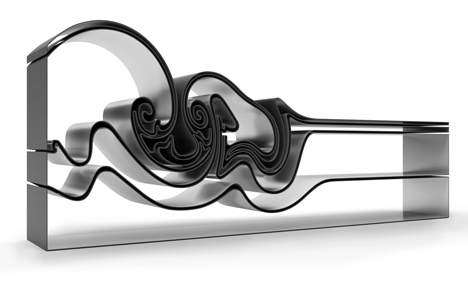
The Vortex bookshelf shown in the exhibition starts with ordinary horizontal shelves at the bottom. Higher shelves become more curved and convoluted until they lose all sense of function and become entirely ornamental at the top.
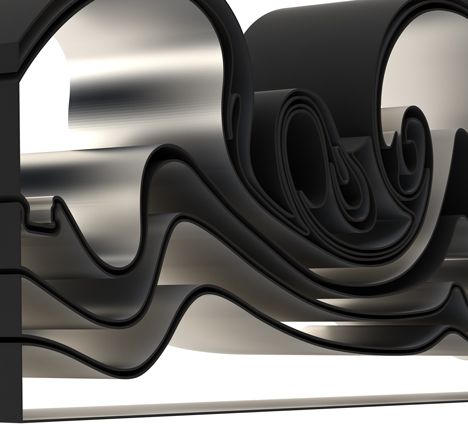
The Gradient chair, part of the Microstructures series, is made of 3D printed thermoplastic polyurethane modified to be solid at its structural points, and to be foam-like at its open parts. A bottom-heavy bulbous base combines with a simple upright back resulting in a comfortable rocking chair. Laarman collaborated with Michal Piasecki, Ewa Jankowska and Jacek Markusiewicz on this project.
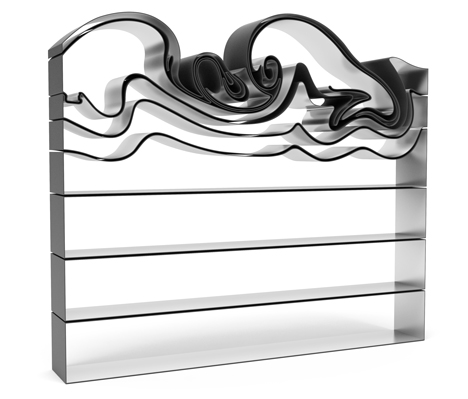
The Microstructures chairs are also the first chairs to be directly printed in aluminium as well as in soft polyurethane.
"The aim of this series is to develop 3D printed objects that can address functional conditions through variation in size, porosity, thickness, flexibility, rigidity, hardness, softness and colour," said Laarman.
"For instance, a comfortable soft and flexible seat surface can morph into a hard rigid open structure that is optimised for strength and weight in a certain direction for a specific function."
Friedman Benda opened in 2005 as a venue for established and emerging designers and artists. The exhibition runs until 14 June 2014.